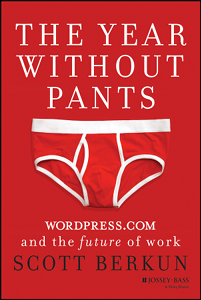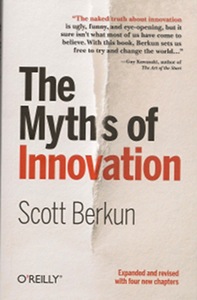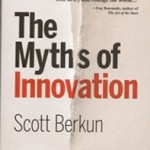Posted by Elena del Valle on November 1, 2013

The Year Without Pants
Photos: Jossey-Bas
Scott Berkun, a Microsoft veteran with a corporate background who had authored four books, wondered whether he would follow his own advice if he were back in the workforce trenches. An opportunity to test his theory arrived when he was invited to lead a team of programmers at WordPress.com from 2010 to 2012. He agreed on condition that as a participatory journalism exercise he would write about his experience and the lessons he learned.
In The Year Without Pants and the Future of Work (Jossey-Bass, $26.95), he outlines the highlights of the experience as he saw them. He includes a behind the scenes look at Automattic, the firm he thinks drives WordPress.com’s success. The 258-page hardcover book published in 2013 is divided into 24 chapters.
His biggest challenge the author said by email was that “As an expert I had to put my expertise to the test, and find out: what of my own advice do I practice? And how will I adjust to a workplace with no email and no offices?”

Scott Berkun, author, The Year Without Pants
Every month 396 million people view more than 14 billion pages in 120 languages at WordPress.com. As of this writing, there are 72 million blogs around the world; users produce 36 million new posts and 62 million comments per month, according to the company website. He believes other businesses can take advantage of the insights he gleaned first hand from working there.
“I learned the future of work can be wonderful if managers are willing to reevaluate what’s possible, based on the examples WordPress.com has provided,” he said when asked what was the biggest reward he received from the project.
In the book, he explores workplace issues at WordPress.com such as how he thinks the company’s decentralized workplace, relying on 170 employees in 70 different cities, is creative and productive. He draws attention to the company’s “culture of self-sufficiency and experimentation.”
And he considers how the use of blogs, chat and Skype in lieu of email to communicate make it efficient. It’s possible, he says in the final chapter, that technology companies like Automattic are returning work to its roots and away from the absurdity of work that exists in many white collar environments; and that they might return some of the meaning of work the business world has lost.

Click to buy The Year Without Pants
Comments:
Filed Under: Books
Posted by Elena del Valle on November 19, 2010

The Myths of Innovation book cover
Scott Berkun looks, with humor, at the history of ideas in the newly published paperback edition of The Myths of Innovation (O’Reilly Media, $17.99). This edition includes four new chapters on finding ideas and putting them to work, updated references, and new stories.
The author set out to share with readers his thoughts on where ideas come from, the history of history, why people don’t like ideas, how ideas thrive, how to pitch an idea and the benefits of innovation. He believes one of the secrets to discovering ideas is to work hard while making sure to include down time. Letting the mind wander frees our subconscious to be creative, Berkun says.
According to Freeman Dyson, a physicist and author Berkun quotes in his book, people who are busy all the time are not creative. At the same time Dyson says that breaks only work if they represent a change from productive work. In other words, being on a full-time vacation does not necessarily lead to creativity; although multitasking may be helpful by allowing the mind to take a break from one project while the person works on another.
“Innovation is simple if you stop thinking about it in the broken, false, but popular ways others do, and the book is a great guide,” said Berkun in a press release. “It’s been so popular because it makes the surprising truth about how great things happen fun and inspiring, as well as easy to apply at work as soon as you put the book down.”
Berkun also points out that the line between creative and insane (or eccentric) is a fine one. At the same time he believes that the moment of discovery cannot be controlled and is only one part of making an idea into a success. He argues that innovation for the sake of innovation is not always the answer in the same way that the status quo isn’t always the best solution. In an earlier chapter he proposes that while innovation itself cannot be harnessed it is possible to identify the challenges faced by innovators; he proposes eight main challenges.
Berkun is the author of Making Things Happen and Confessions of a Public Speaker. Since Aug 2010 he works for Automattic on WordPress.com. The author grew up in Queens in New York City, studied design, philosophy and computer science at Carnegie Mellon University, graduating with a B.S. in Logic and Computation. He worked at Microsoft from 1994 to 2003. His work has appeared in The Washington Post, The New York Times, Wired Magazine, Fast Company, and Forbes Magazine.

Click to buy The Myths of Innovation
Comments:
Filed Under: Books














